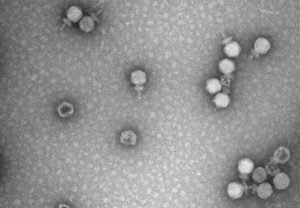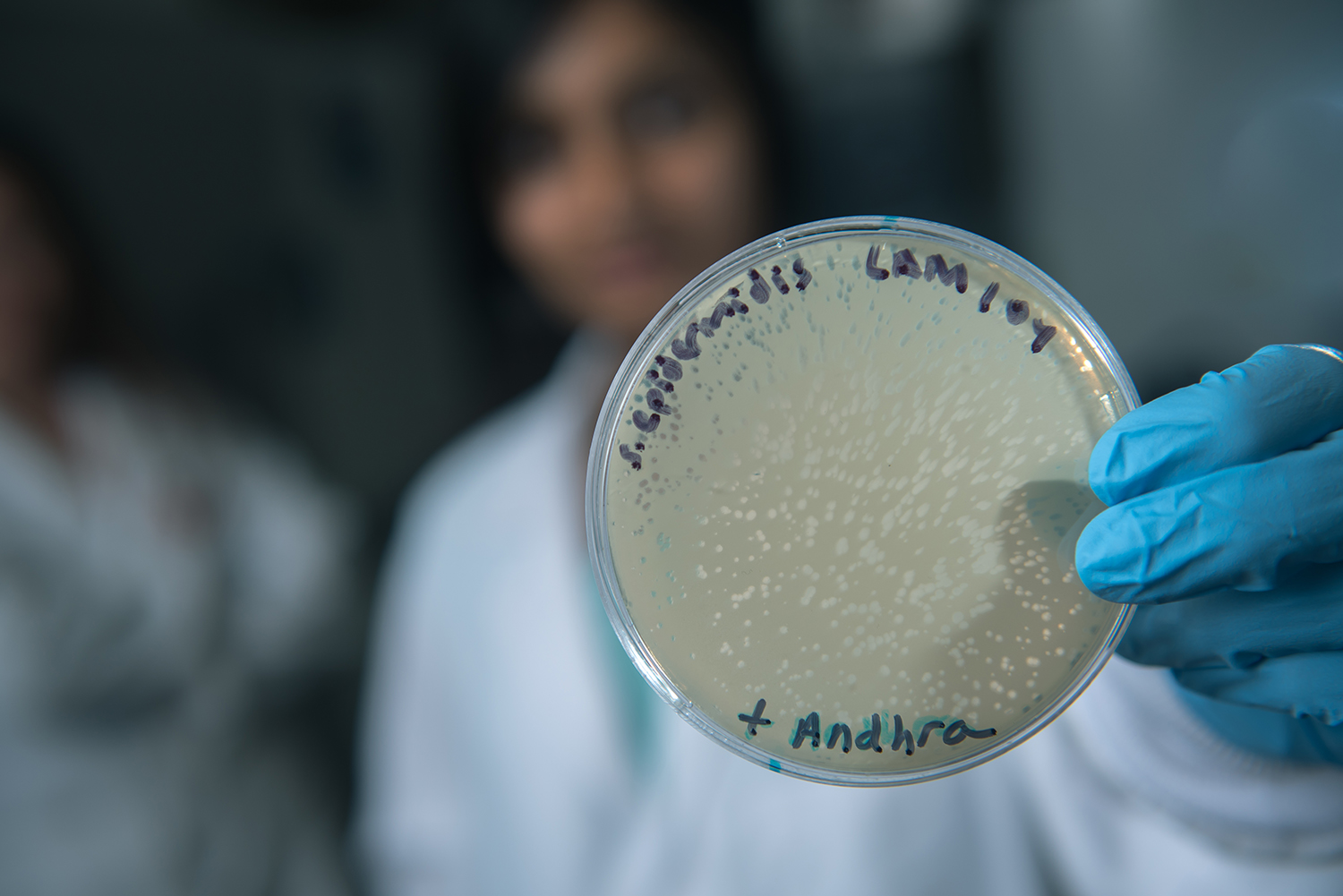
TUSCALOOSA, Ala. – Researchers at The University of Alabama discovered how a common skin bacteria wards off viruses by leveraging cellular processes normally not considered part of any immune system.
This discovery constitutes another milestone in understanding how to harness bacterial viruses to combat antibiotic-resistant infections.
An immune system in Staphylococcus bacteria UA researchers studied does not function on its own. Instead, it collaborates with other enzymes inside the cell to mount an effective defense against viral infection, according to a paper published this week in the journal eLife.
Dr. Asma Hatoum-Aslan, UA assistant professor of biological sciences, and one of her graduate students, Lucy Chou-Zheng, are co-authors on the paper.
“There are a lot of far reaching consequences of the work,” Hatoum-Aslan said. “This basic research provides first glimpses of how an important bacterial defensive system mobilizes other parts of the cell in times of need.”
The human body hosts all sorts of bacteria and the viruses that attack them, called phages. There is limited knowledge about what transpires between phages and their bacterial hosts within the microbiome.
Some phages are lethal to their hosts and constitute attractive candidates that might one day supplement or replace antibiotics. However, bacterial defenses threaten to undermine the effectiveness of phage-based antimicrobials.
“Since phages are being explored as alternatives to conventional antibiotics, it is essential to understand precisely how bacterial immune systems work and interact with their immediate environment, especially in pathogenic bacteria,” Hatoum-Aslan said. “In addition, detailed molecular level studies of this sort usually provide fertile grounds for the conception and development of new biotechnologies. “

In the past, research focused on the perpetual arms race between bacteria and phage led to groundbreaking discoveries such as the immune system commonly referred to as CRISPR-Cas, which has since sparked a genome editing revolution.
CRISPR-Cas systems are sequences of genetic code inside bacteria with the ability to store snippets of the phage genome, allowing the cell to “remember” past invaders. When a phage invader with matching code is encountered again, CRISPR-associated enzymes cut apart the invading genetic sequences and destroy the phage.
Scientists are able to manipulate this defensive process to edit genetic code in a wide-range of organisms, including humans.
Six types of CRISPR-Cas systems use the same basic mechanism to identify foreign invaders and destroy them. UA researchers studied Type III CRISPR-Cas systems, among the most widespread in nature. They are also important because they form a nearly impenetrable barrier to phage infection, unlike other CRISPR-Cas types.
The team uncovered a new mechanism of cooperation between a model CRISPR-Cas system in Staphylococcus epidermidis, known as CRISPR-Cas10, and the degradosome, a genetic degrading machine that normally performs housekeeping functions, such as recycling damaged genetic code. Rather than acting as self-contained modules, these systems have evolved to coordinate with each other to defend against invading phages.
“We anticipate that the basic mechanistic insights revealed by our study will facilitate efforts to develop more effective phage-based antimicrobials and can potentially inspire new technologies based on CRISPR-Cas10,” Hatoum-Aslan said.
Contact
Adam Jones, UA Media Relations, 205/348-4328, adam.jones@ua.edu
Source
Asma Hatoum-Aslan, assistant professor of biological sciences, ahatoum@ua.edu
